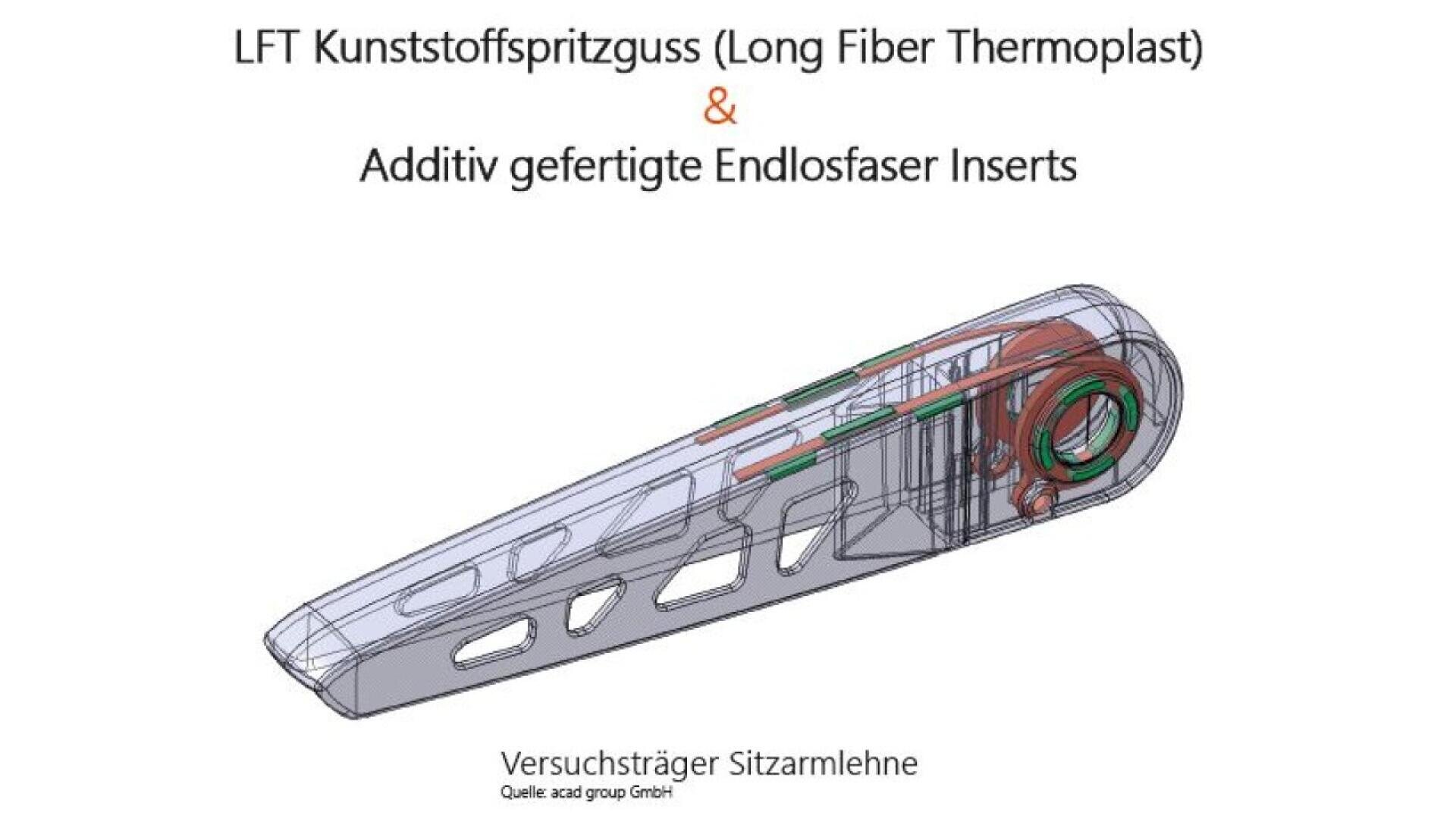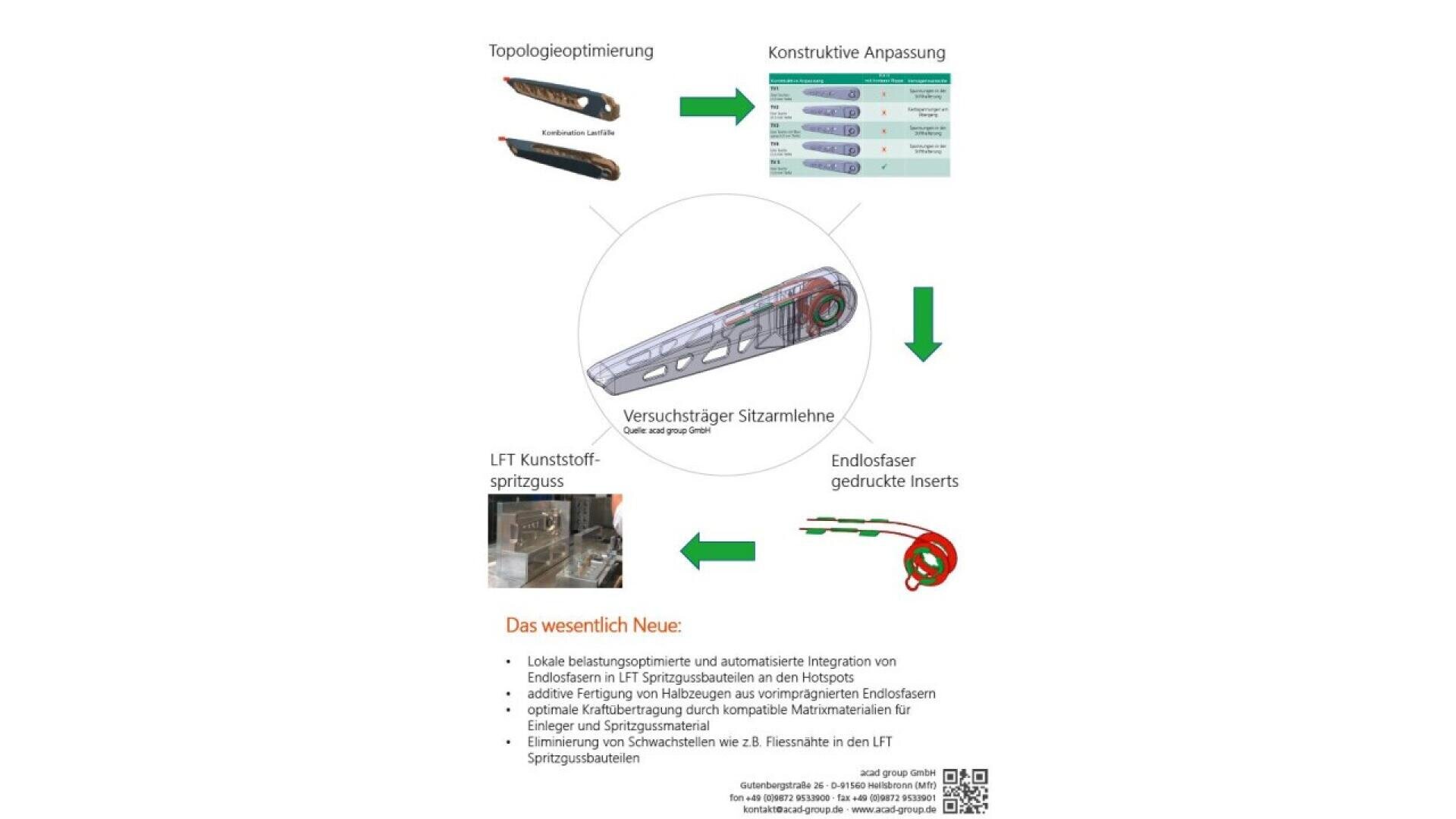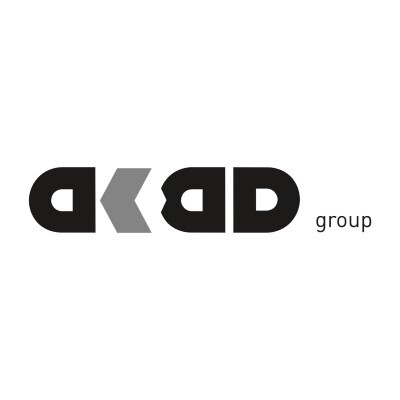Hybrid process from injection molding and additive manufacturing
Process for the local reinforcement of injection molded components with additively manufactured continuous fiber-reinforced inserts. The targeted insertion of continuous fibers results in significant lightweight construction potential and the targeted elimination of local strength weaknesses
Over the years, numerous manufacturing processes have been developed that enable the processing of plastics Injection molding has established itself as a standard process in industrial practice for the production of plastic components.
Thanks to the high level of expertise available and the optimal mastery of processes in the field of injection molding, this manufacturing process enables plastic components to be produced in high quality and cost-effectively in large quantities (mass production). The wide range of available materials also makes injection molding interesting for industry. However, the numerous advantages are offset by a number of disadvantages. The strength and rigidity of thermoplastics are low compared to metal materials and are also dependent on stress. Due to these circumstances, these injection-molded components are not suitable for high loads, which means that the weight advantage over metal materials is no longer decisive.
In order to better exploit the lightweight construction potential of injection molded components, it is necessary to improve their mechanical properties. Technically feasible approaches already exist in which unfilled plastics are substituted by short or long glass fiber reinforced plastics in the injection molding process. However, the use of significantly better reinforcing continuous fibers is not possible here, as these cannot be processed in injection molding.
Insert technology is a way of tapping into further lightweight construction potential and improving the mechanical properties of an injection molded component at the same time. The designer can react to the local stresses and thus reinforce the stress hotspots in the injection molded component with locally positioned inserts.The inserts are usually made of metallic materials.
However, if the component volume is small, it is difficult to transfer the force to the metal. Based on long glass fiber-reinforced injection molding, inserts made of continuous fiber-reinforced fiber-reinforced plastic composites offer new production possibilities. This means that the mechanical properties can be significantly increased in the areas subject to the highest local stress. For example, local reinforcement offers the possibility of reducing ribbing, wall corners and the degree of long glass fiber filling, which leads to further material and weight savings. To achieve material and weight savings, continuous fibres can be integrated into an injection-moulded component using an additional, upstream production process. New additive manufacturing technologies offer new approaches for this.



